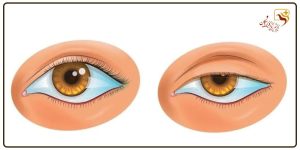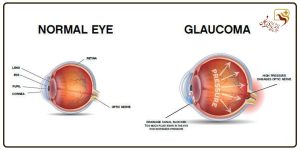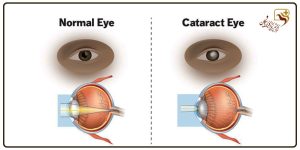بیمار نیکان عضوی از خانواده ماست

Strabismus
What is strabismus?
Any deviation from the eyes’ correct alignment is called strabismus.
Strabismus is the lack of coordination of the movement of the eye muscles or the inability to focus between the two eyes, causing the eyes to be in different directions. This disease is a common ophthalmologic problem and is seen in 4% of children and adults. In normal binocular vision, patients’ both eyes look at the same point. The visual part of the brain combines the two received images into one three-dimensional image. When one of the eyes deviates in strabismus, two different images are sent to the brain. In a young child, the brain learns to ignore the image of the deviated eye and only accept the image of the straight eye or the better-sighted eye. This causes loss of depth perception and binocular vision. Adults who suffer from strabismus are affected by double vision because the brain has the ability to accept or receive the image of both eyes. If not treated, strabismus (monocular vision) results in amblyopia (lazy eye) in half of the children cases.
Types of strabismus
One or both eyes may turn inward (cross-eyed or isotropy) or outward (whale-eye or exotropia). Rarely, the eyes are deviated upward and downward. A type of eye deviation is hidden and is characterized by eliminating binocular vision (closing one eye), known as hidden strabismus or heterophoria. Obvious strabismus is called heterotropia or tropism. Isotropia is the most common type of strabismus.
What causes strabismus?
The movement of the eye around is controlled by six muscles around the eye and by the command of the brain. Following are reasons for lack of movement coordination:
- Imbalance of the muscles around the eyes;
- Eyes’ inability to focus equally. The brain cannot accept images with different focus; hence, it does not process the messages from one eye. Eventually, the weaker eye becomes useless and a “lazy” eye or Amblyopia develops;
- Brain injury or head injury, for example in accidents (rare);
- Hereditary incidence of Strabismus, MS, Down’s syndrome, thyroid disease (Graves’ hyperplasia), eye or brain tumor, stroke, hypertension, diabetes, fetal brain damage such as cerebral palsy, birth injury, complications of eye surgery such as cataract may cause strabismus.
Strabismus Treatment
Treatment of strabismus is similar to that of amblyopia (lazy eye) and the treatment is aimed at obtaining the best possible vision and appearance beauty as well as creating the best direction for the eyes and achieving binocular vision.
Treatment includes prescription of single-vision and in some cases double-vision glasses, stronger eye closures to correct the lack of focus (causing the weaker eye to work), prescription of prisms, eye muscle exercises, botulinum toxin injections (only in adults) or surgery to correct the condition of the eye muscles. During surgery, the amount of muscle force in one or both eyes is adjusted. For example, in isotropy surgery, the stronger internal muscle may be separated from the eye and reattached to the eye a little later. This weakens the pulling effect of the muscle and allows the eye to rotate outwards. Sometimes it is possible to shorten the external muscle to facilitate the outward movement of the eye and thus increase its pulling force. If the baby needs it, it is recommended to perform strabismus correction surgery as soon as possible.
In adults, surgical treatment is only suitable for cosmetic purposes, unless after vision treatment. Injecting botulism toxin into the eye muscles (into the contracted muscle) is effective in some cases.



